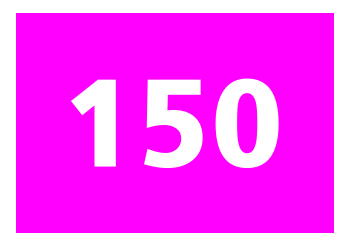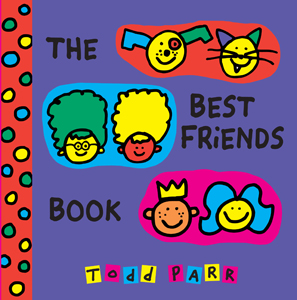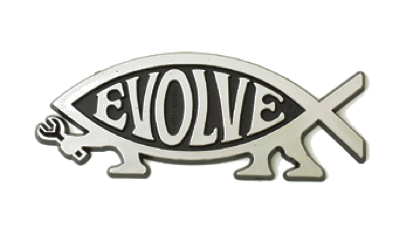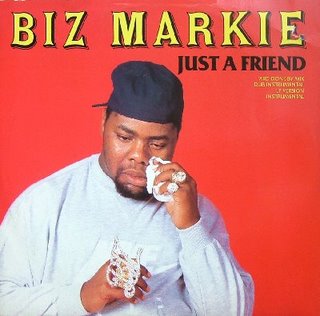It’s been frustrating to see social networking take on the properties of game mechanics instead of organic social behavior. That’s why The Real Life Social Network, a presentation and research by Paul Adams, was such a breath of fresh air.
If you haven’t reviewed it already, you should. It’s one of the smartest and most thoughtful investigations into how to translate offline social relationships online.
Dunbar’s Number

One of the concepts Adams touches on is Dunbar’s Number.
Dunbar’s number is a theoretical cognitive limit to the number of people with whom one can maintain stable social relationships.
While there are upper and lower limits, the number generally sits at 150. I’ve argued the importance of Dunbar’s Number a few times and believe that it is still relevant online. Perhaps technology could increase the number slightly, but not by much in my opinion.
All Relationships Are Not Equal

This seemingly mundane statement hasn’t really been reflected in most social networks. People put different values on relationships. Is someone a friend or an acquaintance? Are they a colleague or a mentor? Who’s your BFF?
In fact, relationships could have a different value based on the context. My best bicycling pal might not be the friend I talk to about my personal life. A close friend might not be the person I ping for a discussion about SEO.
This concept is translated into strong ties (real friends) and weak ties (acquaintances and contacts). Most social networks treat tie strength equally. Lists provide some way to divide your social graph and divvy strong from weak, but it’s still a rather blunt tool.
Memory

Adams also references memory in his presentation. Memory is not infinite. I think that’s an astute observation and dovetails into the conversation about information overload.
I’m fascinated by the idea that weak tie information could crowd out the strong. Could having too many weak ties mixed in with the strong prevent us from having real social relationships? Could the quest for more connections actually marginalize the ones that matter?
Are we overwhelming our memory with a tidal wave of social information?
Groups
Your social graph is made up of groups. Similar to the idea that relationships have different values, your relationships fall into groups. They may be about where or how you met that person. These are my high school friends. These are my friends from San Diego. These are the people I worked with at such-and-such job.
Often these groups also reveal interests. You may have a group of friends surrounding a topic. I have some book friends. But my book friends might not be Philadelphia Eagles fans too. (Paul does a much better job of detailing this in his presentation.)
I had an opportunity to chat with Armen Berjikly at Experience Project earlier this year. What I found amazing was how they allowed users to express all facets of their personality. You could join any number of groups without them defining your entire experience on the site.
People are not just one thing.
Social Evolution

If people are not just one thing, they’re also never the same. People evolve as they gain more life experience.
So, what happens to our groups?
How many of your high school friends do you really keep up with and does that dwindle as you get farther away from that time in your life? Your interests might change. Maybe you moved from Malibu to Omaha, so you’re not into surfing anymore. Will you keep up with all of your surfing buddies? Your childhood best friend may not be a close friend today.
I’ve worked in Fund Raising and Advertising. But I haven’t kept up with most of the people in those industries. I have less in less in common with them over time. Or take a book group. You might enjoy that for a while, but over time it likely disintegrates. The funny thing is, that doesn’t mean I don’t like books or even book groups. I may wind up joining another book group.
It’s what I refer to as social entropy.
Social Entropy

The process of social entropy is OK! It’s natural. Relationships change (Biz Markie’s unrequited love likely faded.) In fact, it might be necessary so you can grow and forge new relationships. It’s a type of creative destruction. I’m not the same person I was in high school, why would I maintain all of those relationships 20 years later?
If I did try to maintain all of those relationships, I’d quickly exceed Dunbar’s Number. In addition, my social graph would increasingly have more weak ties than strong.
How does this translate online? This year I also lucky enough to chat with Lyle Fong of Lithium Technologies. Among many other things, he noted the need for groups to splinter or evolve.
If you’re ever been in an online group you’ve probably experienced this problem. The group probably starts off wonderfully. The signal to noise ratio is excellent. But because of that more and more people join. But ultimately that reduces the signal to noise ratio. Often a core set of members will flee the group to … start a new one. Or another set of members will flee to start a group with a slightly different topic.
Conversely, limiting group membership can also lead to social entropy. A defined group may begin with a flurry of interactions from many members. But then a few begin to dominate the conversation. Others simply fade into the background as they’re pulled in different directions or lose interest. Suddenly, it’s a very small group which doesn’t provide enough stimulus even for those dominating the conversation.
Right after Paul published his research I reached out to him. Though swamped with requests, he was kind enough to get back to me, confirming social entropy and how groups change. At that time it was thought Paul would lead Google’s new social effort. Yesterday he revealed he’s moving to Facebook.
Social 3.0
Building interfaces which allow for social entropy seems incredibly valuable.
So far, the focus has been on establishing relationships, but what about the natural process of breaking them? There has been some comical editorial about services which would help you ‘break up’ with friends. There can be a lot of emotional freight when you decide to unfriend someone. Feelings hide behind those friend numbers. Should those numbers even be exposed in the first place?
Or maybe there should there be a TTL on relationships? Sure, I wanted to check in on that freshman college roommate but do I then want to know about his daily life from then on?
The 50 friend limit imposed by Path is an interesting concept, forcing people to choose only those with whom you have a strong tie.
In real life people evolve and grow apart. I believe the social network that allows people (and their relationships) to evolve will be most successful.
The Next Post: Google Split Testing Tool
The Previous Post: SEO Metrics Dashboard

2 trackbacks/pingbacks
Sorry, comments for this entry are closed at this time.
You can follow any responses to this entry via its RSS comments feed.